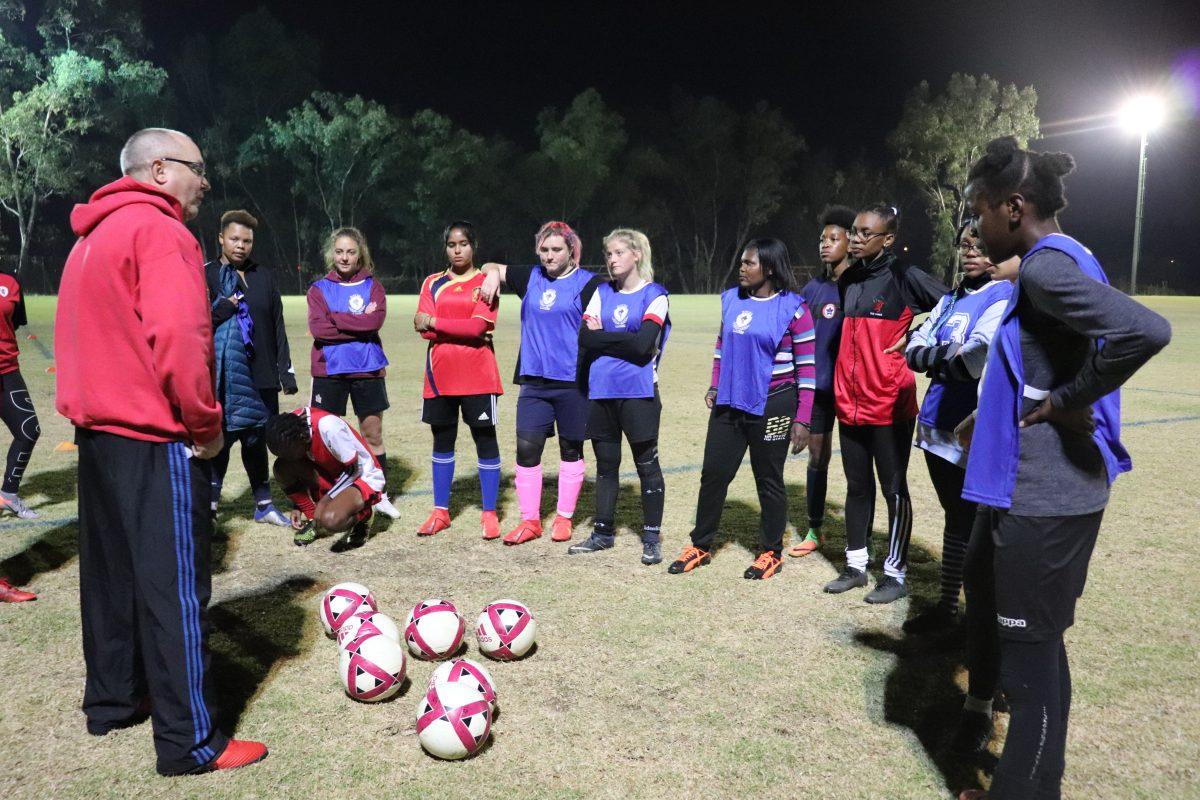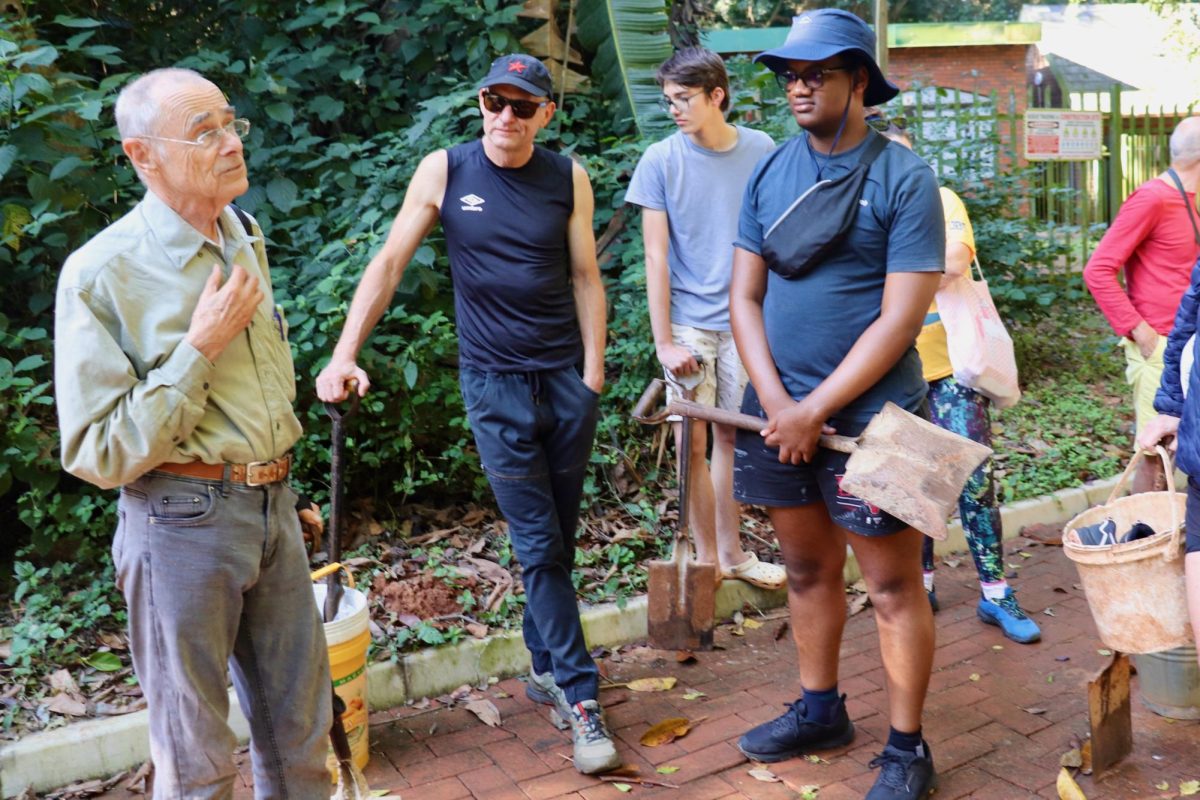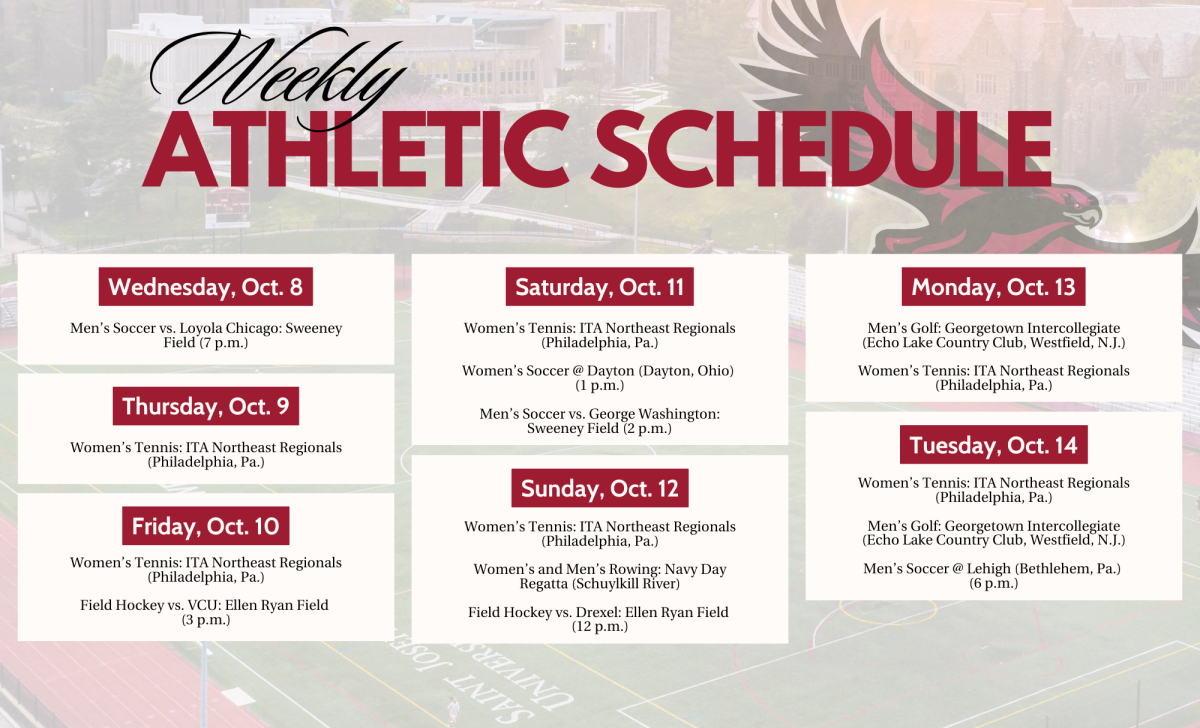Randburg, South Africa — While soccer is one of the most popular sports in South Africa, for female players, it is an activity in which gender-based discrimination poses considerable challenges.
The first adversaries young girls who want to play soccer often face are their own parents, according to Jayson Francis, head coach for Old Parks Soccer Club’s all-female team, also known as the ladies football team. The club is located in the mainly white middle-class suburb of Randburg, on the northern periphery of Johannesburg.
“Parents look at is as a hobby for girls, so they don’t want to send them,” Francis said. “They’d rather them study at home or do something more important.”
That has been the experience for Montsho Matlala as well. Matlala is the football officer at Wits University in Johannesburg and said the lack of opportunity for female soccer players in South Africa makes it a hard sell for parents.
“From a young age, black parents from South Africa don’t want their daughters to play football because they don’t see a future for them in football,” Matlala said. “They see a future in school and all of that stuff. It’s really difficult to convince a young girl from Soweto from a very young age to focus on football.”
The women’s team at Old Parks Soccer Club has 27 players, most between the ages of 14 and 25. The club’s leadership is deliberate in its promotion of women’s soccer, according to Melanie Murcott, 37, a player and former coach.
“This is one of the few clubs where, since I’ve been involved in the leadership, we’ve pushed to prioritize women’s soccer and make sure it has a space and a voice,” Murcott said. “There are plenty of clubs where you’ll get moved off the field for a men’s game.”

Before joining the all-female team at the Old Parks Soccer Club, many of the girls have had to play on boys’ team due to a lack of girls to field their own teams.
Fifteen-year-old Nomalanga Khoza said while she found playing with boys frustrating, it has also given her a chance to prove herself.
“I was playing at school with the boys, and they were taking free kicks,” Khoza said. “One of the guys was like, ‘She’s not going to make it.’ Then I kicked it, and it went in, and they were so surprised. The coach laughed at them, saying, ‘See, she can be better than you.’ It was really sad, and we’re friends.”
The experience left Khoza determined, though.
“It makes me want to do it even more,” Khoza said. “I want to be better than they think I am.”
At a recent practice at the club, the players were buzzing about the South African women’s national soccer team. The team is nicknamed Banyana Banyana, which means “the girls, the girls” in Zulu, one of South Africa’s eleven official languages.
Banyana Banyana was eliminated June 17 in the first round of the 2019 FIFA Women’s World Cup, having lost all three of their group matches and scoring a lone goal against Spain. Despite their short stint in the tournament, it was a historic one, as it was South Africa’s first appearance in the Women’s World Cup.
Many of the girls were cheered by Banyana Banyana’s appearance at the World Cup and hoped it would be used as leverage to bolster recognition of women in the sport.
Nomalanga Khoza and her 18-year-old sister Nothando Khoza said they were initially encouraged by their father to play soccer because he is a fan of the sport. However, until the South African women’s national soccer team qualified for the World Cup this year, he remained critical of women who played.
“Our dad usually looks down on women’s soccer because we’ve never done much as a country,” Nothando Khoza said. “When the women made it, he was like, ‘I think you girls can actually do it.’ He encourages us more than he used to. It’s made us stronger as people and given us hope.”
Murcott said she sees the financial potential in the women’s World Cup debut.
“After making it into the World Cup, there’s now, for the first time, a growing body of veteran women’s soccer players, so there’s money, and it means potential resources to put back into the game,” Murcott said. “Once you start to get older women who have played soccer and are passionate about it, they can make sure corporates invest.”
Currently, there is no female professional soccer league in South Africa, other than a semi-professional league sponsored by Sasol, a South African-based energy and chemical company. The current state of professional and club sports, like many other aspects of South African society, was shaped by the apartheid system, which officially ended with the historic election of Nelson Mandela as president in 1994. Much of the racially segregated apartheid-era sports organizations and systems still reflect inequalities in resources.
But, change has happened, even if it has been incremental. A men’s professional league, the Premier Soccer League (PSL), was established in 1996. The South African Football Association (SAFA) is now in the process of creating a national women’s professional league, which could grow the women’s game in South Africa.
SAFA outlined its goals in a plan titled Vision 2022. One of the pillars of this plan is gender equality, specifically to “provide equal opportunity for women, strengthen governance structures to include women, build women’s teams in equal measure as men’s teams, qualify for all major international competitions, build a strong, vibrant grassroots women’s football programme, train women administrators, referees, coaches.”
No matter what level at which they play, women who play soccer in South Africa have to confront stereotypes about their sexuality. Murcott said it is common to hear that women who play soccer are lesbians.
“It comes from the same patriarchal idea about soccer being a man’s sport,” Murcott said. “I’m playing, and I walk on, immediately I get questioned because I’m not butch enough in the men’s game.”
Nothando Khoza said she also has been stereotyped at school by an educator because one of her peers came out as a lesbian.
“I was told by my soccer and P.E. coach at school, ‘Oh you’re a lesbian. So everybody here is a lesbian,’” Nothando Khoza said. “In P.E., he came up to me and was like, ‘I think you’d feel better as a boy.’ Not only him, but other boys at school say I’m a lesbian because I play soccer.”
Murcott said she often plays in mens’ games, and not only does she face speculation about her sexuality, but she is also stereotyped based on her gender in general.
“You get insulted a lot [by the men], told it’s a man’s game, asked if you’re going to cook them dinner while you’re busy playing,” Murcott said.
For black female athletes, though, discrimination is multi-layered and not just tied to gender and sexuality. Francis said his team, which includes players from different racial and socioeconomic backgrounds, is more diverse than most club teams. But the reality is that players who live in the townships, underdeveloped areas where non-white people were forced to relocate to during apartheid, have a more difficult time making it to practices and games.
“The traveling, for one, is a problem,” Francis said. “A lot of black girls come from the townships, and for them to come at an early age to travel to clubs, it’s very difficult and dangerous.”
Old Parks’ Assistant Coach Greg Green has two daughters who play on his team. He said he often drives players from surrounding townships to away games as their parents cannot always get their daughters there.
The club also has a member-assisted program in which players who cannot afford the registration fees are sponsored by donations.
“We make the opportunities for them where we can,” Green said. “It shouldn’t be about those who can afford it. It’s got to be about the players that are good enough.”

Murcott, who has played on sand pitches in township games, emphasized how fortunate the Old Parks players are compared to other teams. Female players in townships have no facilities and inadequate equipment. At the Old Parks Soccer Club, practices and games are held on one of many grass fields in the complex.
“U.S. soccer is fighting for equal pay,” said Murcott. “We’re fighting for sports bras.”
For opportunities to progress their game, female players in South Africa look overseas, primarily to the United States. This requires students to organize and study for the SAT to be admitted into U.S. colleges.
Heather Tanner, 17, is in the process of taking the SAT with the hope of going to school and playing in the United States. She said her ideal school is the University of California-Los Angeles, but her scores may not reach that level.

“Wherever I’m accepted, I don’t mind going,” Tanner said.
For players who choose to stay in South Africa, playing soccer for a university team is one path toward playing nationally. Matlala said 60 to 70 percent of national team members played for university teams. But gender discrimination is a part of university programs as well, Matlala said.
“They have a university competition where the guys’ team plays away, travels all over the country, almost like a proper league where they play one game and the next game is seven days later,” Matlala said. “When the ladies go away, over four or five days, they’ll play like five games. The ladies team doesn’t have the budget that the men’s team does.”
With the World Cup appearance by Banyana Banyana, though, the female players at Old Parks said they are feeling hopeful for the future of women’s soccer in South Africa.
“Maybe I have a chance to play in the World Cup one day,” Tanner said. “It helps me keep my dream to come pro a reality.”
















































